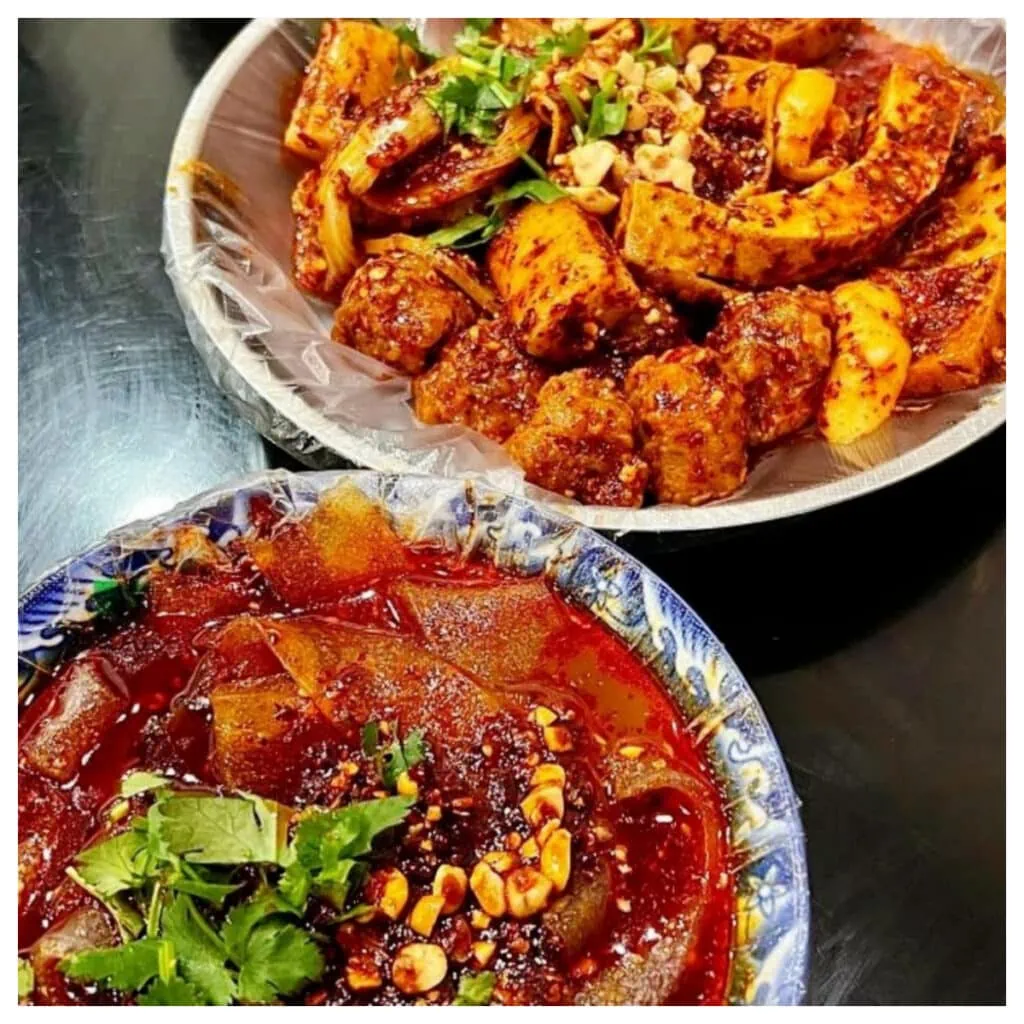Ahead of China’s Qingming Festival holiday in April, Tianshui, a relatively small city in Gansu Province, saw travel bookings jump more than 20% on platforms such as Ctrip. Since March, tourists have been flocking to the city – previously mainly known for a series of Buddhist rock carvings and grottos – to sample a local dish: Tianshui malatang.
Malatang (literally ‘numbing, spicy, hot’) is a popular street food dish in which vegetables, meat, tofu and other ingredients are cooked in a spicy broth. Compared to hot pot, where diners cook ingredients themselves in a communal pot, malatang vendors cook the ingredients (usually after diners have selected them from tables or fridges, buffet style) and then serve them in individual bowls.
Thought to have originated from Sichuan’s spicy culinary tradition, the Tianshui version is equally spicy, with videos on social media platforms like Douyin and Xiaohongshu showcasing bowls of ingredients tossed in shiny red chilli sauce.
Tianshui follows on the heels of Zibo, which went viral last year for its outdoor barbecue restaurants, as a city that has become an unlikely tourism hotspot.
These new tourism hotspots are being created by social media, often through organic content that is then picked up by state media and culture and tourism organisations – for brands, this is a lesson in the importance of monitoring and responding quickly to online content created by consumers. As of late March, Tianshui malatang-related posts and hashtags had exceeded 1.8 billion views on Douyin, the Global Times reported.
The virality of Tianshui malatang demonstrates the vast appetite for novel experiences among Chinese tourists, especially the younger generations. Despite China’s international borders reopening more than a year ago, China’s domestic tourism market remains robust, with many people choosing domestic destinations for their accessibility and affordability.

Photo: @gansuexplore/Instagram
This is perhaps why both Tianshui and Zibo went viral for relatively cheap street food dishes (a bowl of malatang typically costs around £3) – it’s an affordable way to try something new and get in on a trend, especially for students and Gen Z office workers who have ample free time but limited budgets.
Nevertheless, the popularity of Tianshui malatang hasn’t just been driven by social media trends; it also speaks to a pursuit of quality and a growing appreciation for locally-sourced ingredients. The most popular malatang vendors use local Gangu chillies, known for their unique aroma and fiery heat, and potatoes from Dingxi – the ‘potato capital of China’ – to make potato starch noodles.
Nevertheless, it remains to be seen whether cities like Zibo and Tianshui can translate their overnight virality into long-term economic gains, or will simply be a flash in the pan.




